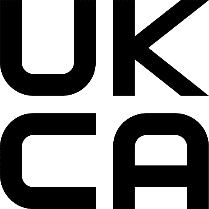Brexit: impact on textile labelling
The UK will leave the EU Single Market and Customs Union on 1st January 2021

Whilst businesses have had a long time to prepare, this change will have a dramatic effect on every element of United Kingdom (UK)/ European Union (EU) trade. A potential Free Trade Agreement between the UK and the EU will establish whether and which goods will circulate between these two areas on a tariff free basis as well as other issues around border controls.
However, even if there is a Free Trade Agreement between the UK and the EU, it is expected that
- Customs declarations will still be required at the border in both directions;
- ATA Carnets will be required for attending tradeshows;
- Companies will need to protect their design rights in the UK and the EU;
- there will be separate REACH requirements for the EU and the UK;
- and there will be special arrangements for goods moving through Northern Ireland.
If you bring manufactured goods into Great Britain from the EU or EEA and want to place them on the market, you will have new responsibilities. (Please note Great Britain refers to England, Scotland and Wales. Separate requirements apply to Northern Ireland).
Textile care labelling requirements: some will remain the same but some will change.
The following will remain the same
- There will be no change to the requirement to have full fibre content information fixed on the label of the garment. The content of EU regulation 1007/2011 will be passed in to UK law on 1st January, 2021.
- There will be no change to the care labelling requirements. There is no legal requirement to include care information but if you do not include care information, you would be responsible for any damage caused to the garment if the consumer had undertaken a reasonable cleaning process. Remember though that since 2018 the GINETEX symbols have been protected by trademarks in the UK.
- There will be no compulsory origin labelling unless the consumer could be misled as to where a garment was made.
The following are new requirements for products coming in to the UK from the EU
- You must label the goods with your company’s details, including your company’s name and a contact address in the UK as of 1st January 2021. Until 31 December 2022 these details can be on accompanying documentation. After that they will need to be permanently fixed to the product. However, in order to ensure the consumer is not mislead, this could mean that you would also have to include Country of Origin labelling on the garment.
- CE and UKCA Marking

The UKCA mark is a new product marking that will be used in Great Britain (i.e. it does not apply to Northern Ireland). It covers most goods previously covered by the CE mark including toys and PPE.
If you have any question on the impact and requirements in relation to Brexit, GINETEX is at your disposal for any complementary information at ginetex@ginetex.net
Tags : Care
News
GINETEX NEW PRESIDENT – On November 8th 2024, Adam Mansell has been appointed as GINETEX President for a 2-year period starting January1st 2025. He is the CEO of the UK Fashion and Textile Association (UKFT).
ISO 3758:2023 STANDARD HAS BEEN PUBLISHED
December 6th ,2023 – ISO 3758:2023 standard has been published, Textiles – Care labelling code using symbols.
This fourth edition cancels and replaces the third edition (ISO 3758:2012) technically revised.
RESULTS OF THE 4th IPSOS EUROPEAN BAROMETER 2023
What are the textile care habits in Europe ?
A NEW PRESIDENT FOR GINETEX
Mr. Thomas Lange, from German Fashion Association, has been appointed President of GINETEX for 2 years starting 1 January 2023.
RESULTS OF THE 3rd IPSOS EUROPEAN BAROMETER 2021
Environmental concerns are now central to Europeans’ new textile care habits.
BREXIT: IMPACT ON TEXTILE LABELLING
Textile labelling requirements in the UK will change starting 1st January 2021. Here are the main new requirements.
THE CHARTER FOR SUSTAINABLE CLEANING
A.I.S.E. presents first products which comply with the renewed detergents industry sustainability standard and relaunched its cleanright.eu platform.
A NEW PRESIDENT FOR GINETEX
Mr. Alejandro Laquidain, from Consejo Intertextil Español, has been elected President of GINETEX for 2 years starting 1 January 2021.
CLEVERCARE.INFO - A REVAMPED WEBSITE!
Enhanced with new sections, the aim of this new website is to become the reference in textile eco-care for consumers.
RESULTS OF THE 2ND IPSOS EUROPEAN BAROMETER 2019
One of the main findings is that durability of clothing is at the heart of Europeans’ interests, who wish to keep their garments for as long as possible.
HOW TO CLEAN A FABRIC FACE MASK
In the time of Covid-19, GINETEX gives you the main recommendations on how to take care for your fabric face mask.
GINETEX SIGNS THE UN CHARTER
By signing the UN Fashion Industry Charter for Climate Action, we continue our commitment to make consumers and brands aware of the changes necessary to decrease the impact of the textile and Fashion industry on the environment
SUSTAINABLE TEXTILE CARE
Clervercare.info, a full marketing program aimed at end-customers. Discover more with our video and comic strips!
A NEW PARTNERSHIP
GINETEX is now member of the Sustainable Apparel Coalition – Both of our international organizations are teaming up for a better world!
JOINT INDUSTRY ANNOUNCEMENT
A.I.S.E., APPLiA & GINETEX are publishing their joint tips for sustainable laundering.
A BAROMETER FOR CARE LABELLING
GINETEX, in partnership with IPSOS, unveils the outcomes of its European barometer "Europeans and textile care labelling".
THE EXTENDED PRODUCER RESPONSIBILITY (EPR)
France: The AGEC Law imposes, from January 1st 2022, the affixing of TRIMAN signage and info-sorting on products such as clothing textiles, household linen and footwear.
National Members
Video
GINETEX has developed an internationally applicable logo for sustainable care. Consumers are given information to help them reduce the environmental impact of caring for textile.



